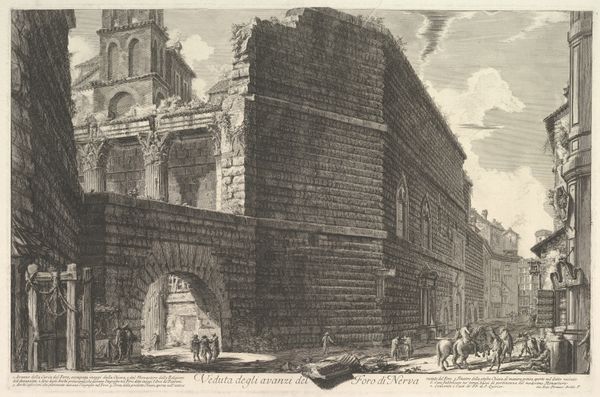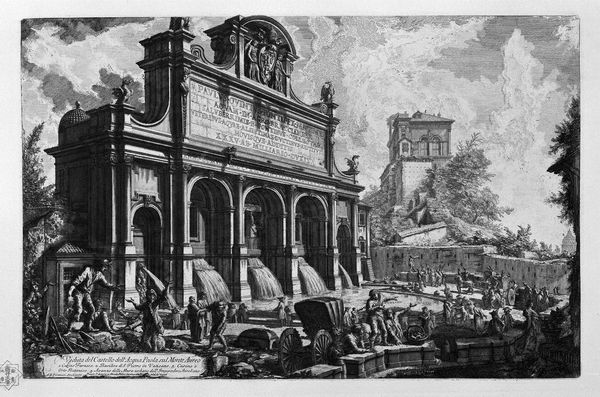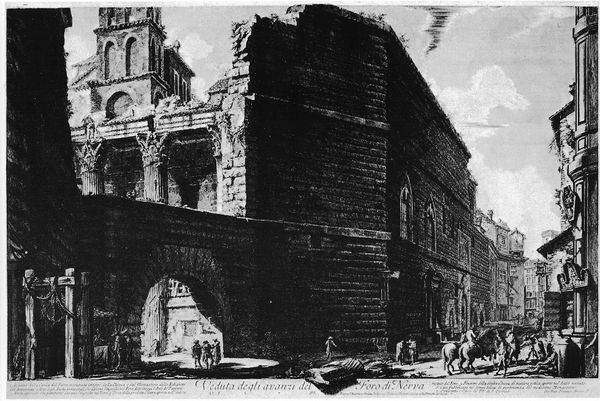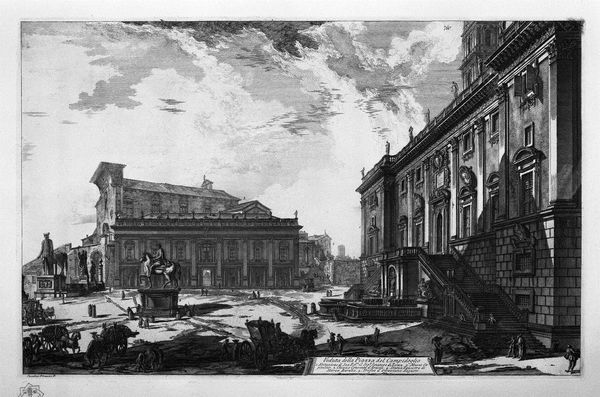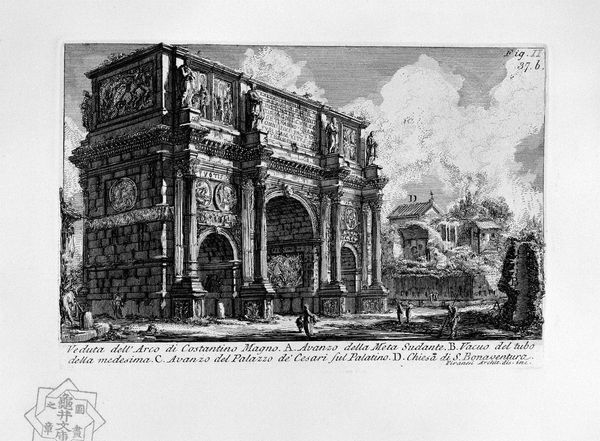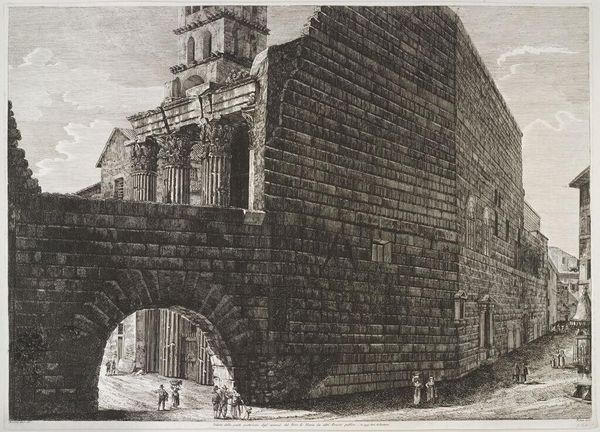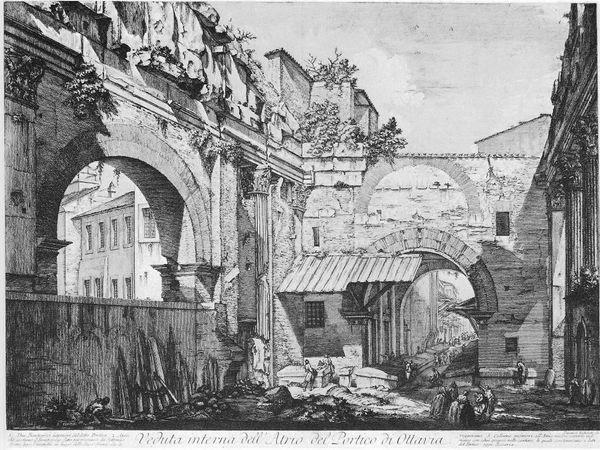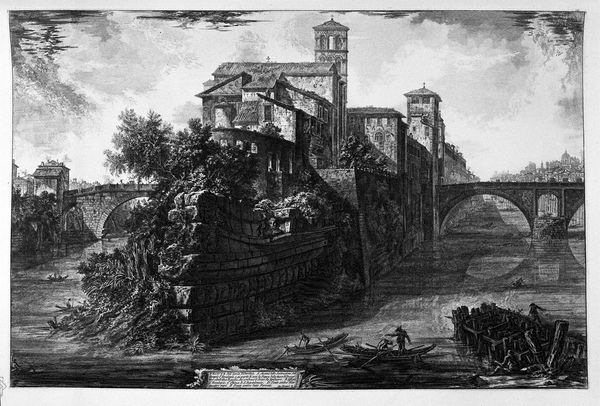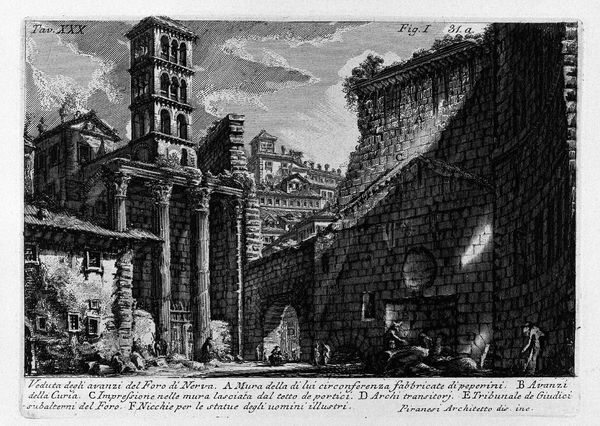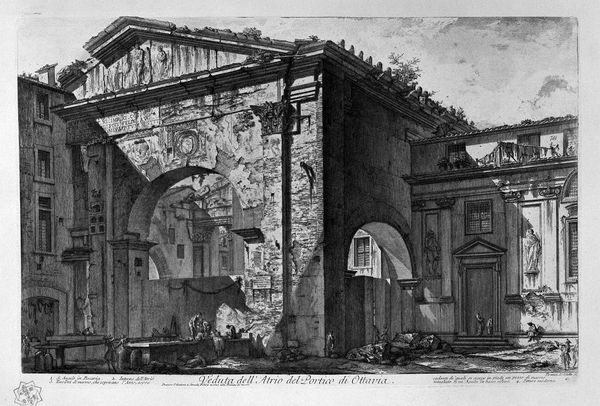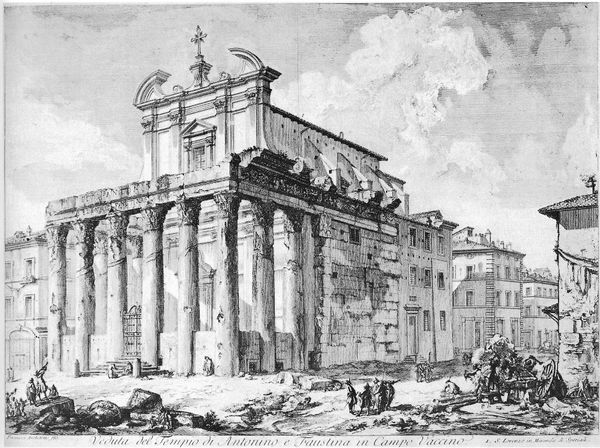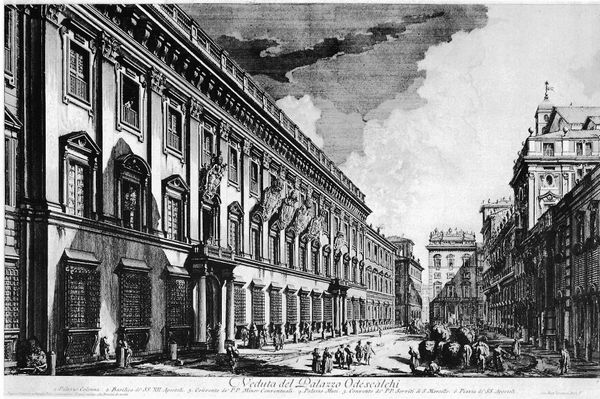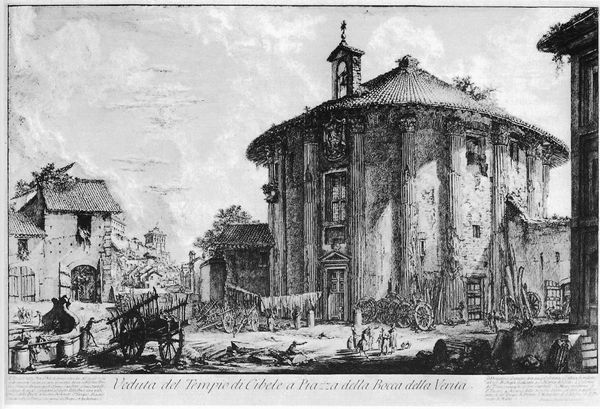
drawing, print, etching, graphite, engraving
#
drawing
#
baroque
# print
#
etching
#
sculpture
#
landscape
#
perspective
#
ancient-mediterranean
#
column
#
graphite
#
cityscape
#
history-painting
#
charcoal
#
graphite
#
engraving
Copyright: Public domain
Editor: Here we have Piranesi's "View the remains of the Forum of Nerva," an etching. The sheer scale of the architecture, even in ruin, is quite impressive. What stands out to you about this work? Curator: I see Piranesi grappling with the material reality of Rome’s transformation. Notice how the printmaking process itself - the precise lines, the laborious etching - mirrors the way these massive stone blocks were extracted, shaped, and assembled. It’s about labor, isn’t it? Both the ancient Roman builders and Piranesi’s own artistic labor. Editor: That’s fascinating. I hadn’t considered the printmaking process as a form of labor parallel to construction. How does that reading influence the way we view the crumbling ruins? Curator: The ruins are not just romantic remnants; they’re evidence of a lost mode of production, a different way of organizing society and its resources. Look closely – those stones weren’t magically placed there. We're seeing the consequences of intense physical effort, the kind that built empires, and the effects of subsequent decay and reuse. Editor: It almost makes the Forum of Nerva seem like a quarry, where time and social changes are continually reshaping its material. Curator: Exactly. Piranesi isn't just presenting a picturesque view; he's subtly reminding us of the cycles of material use and reuse. Rome wasn't built in a day, and it certainly wasn't abandoned overnight either; each successive civilization alters it, consumes it, rebuilds with its remnants. Editor: I am now looking at this piece with completely new eyes. Seeing it as less of a history lesson and more about process of creation, destruction, and labor is a refreshing lens. Curator: Yes, and consider the social implications. Who benefited from that labor? Whose hands shaped those stones, and to what end? Engaging with those questions makes this print resonate far beyond its depiction of Roman ruins.
Comments
No comments
Be the first to comment and join the conversation on the ultimate creative platform.
